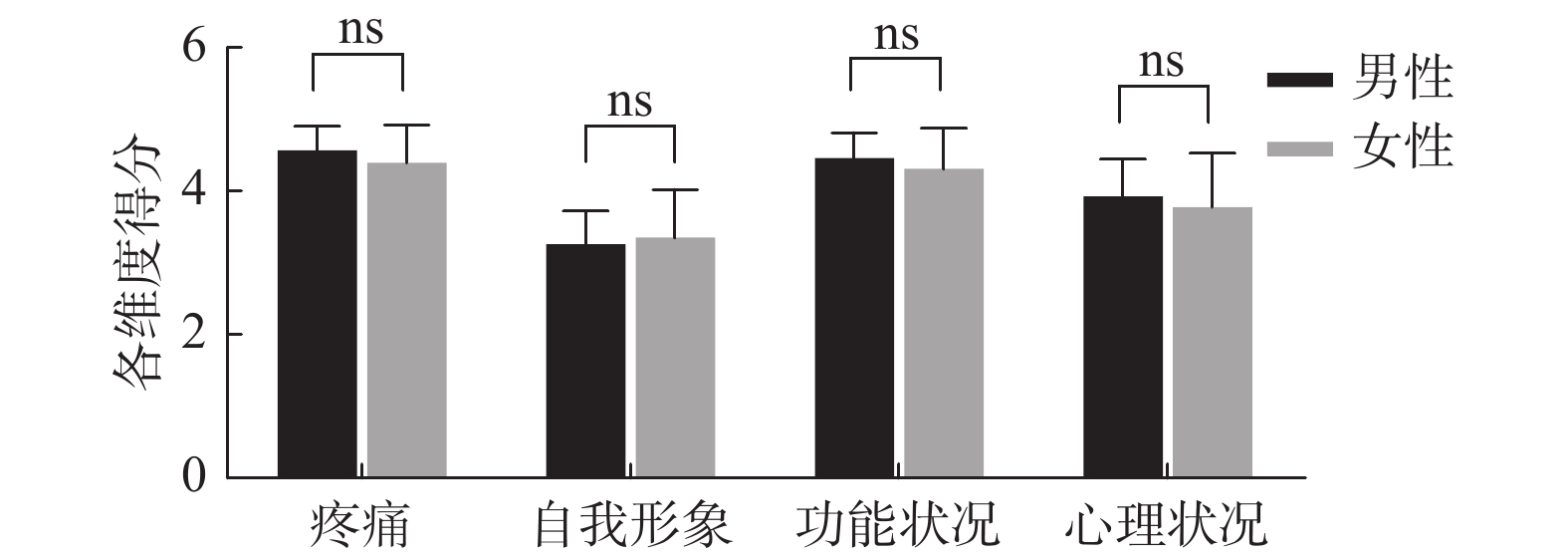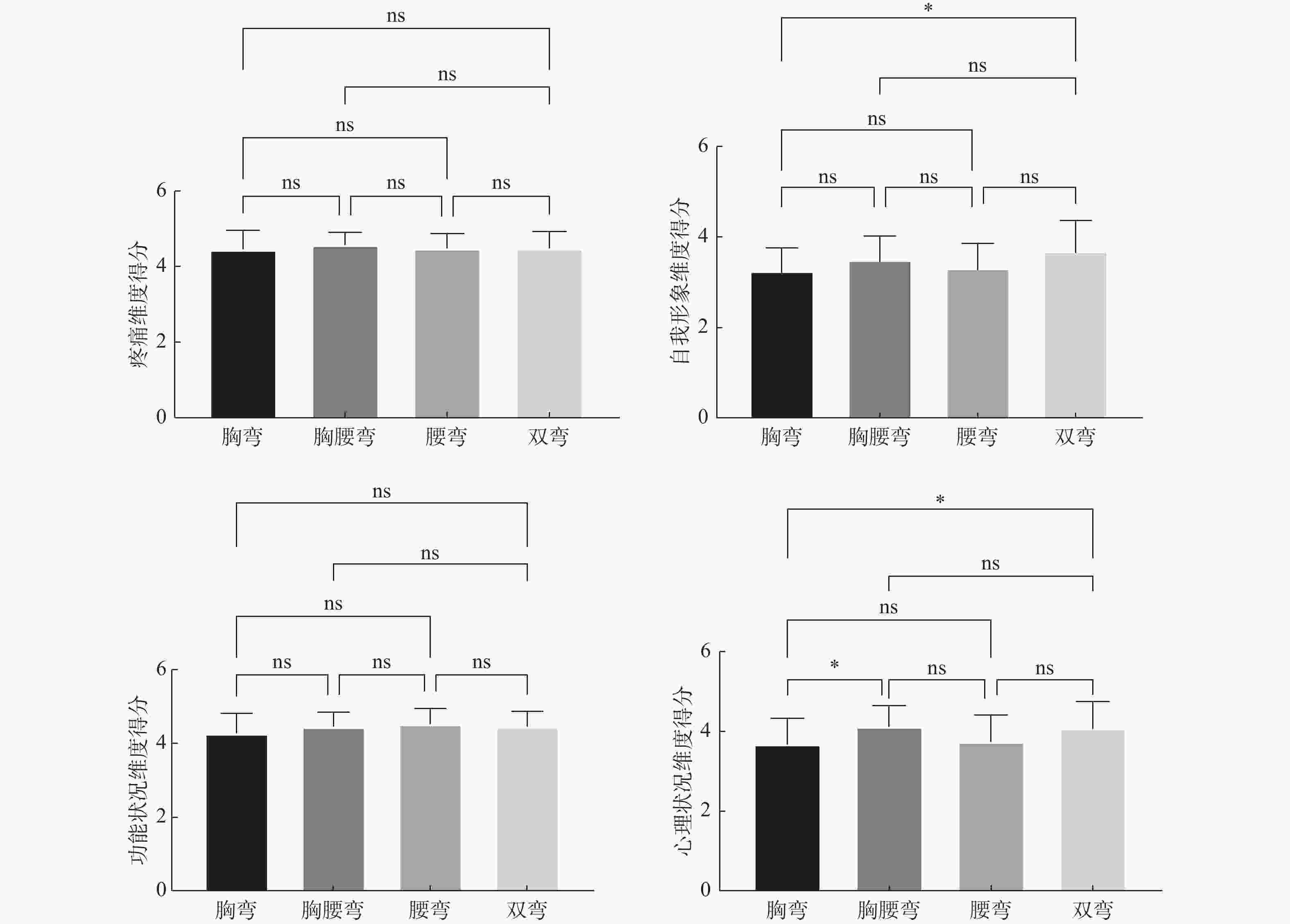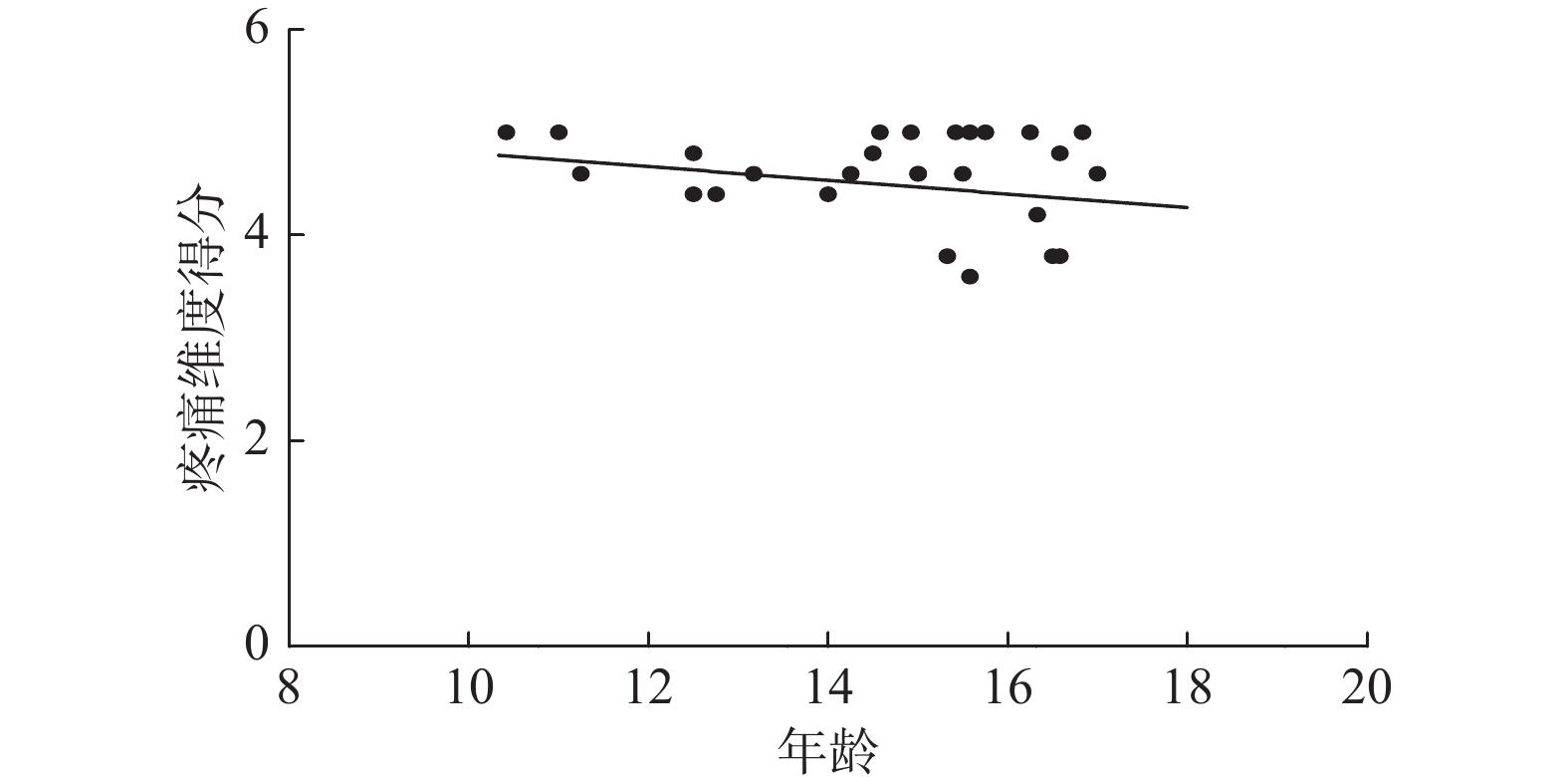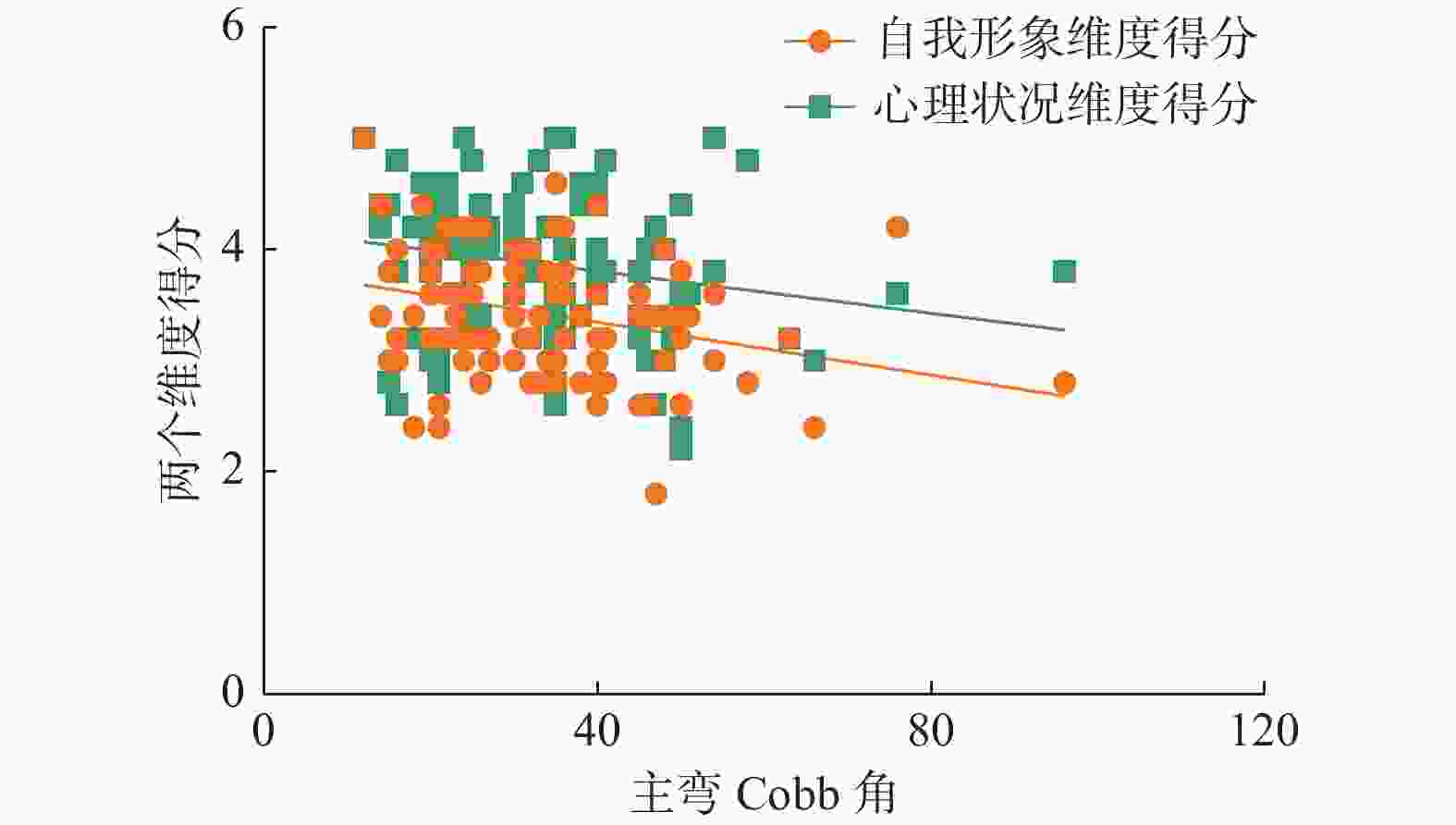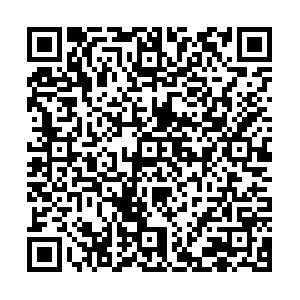Factors Affecting the Quality of Life in Adolescent Scoliosis
-
摘要:
目的 分析人口学参数和脊柱畸形测量参数间青少年脊柱侧凸(adolescent scoliosis,AS)患者在脊柱侧凸研究学会-22(scoliosis researth society-22,SRS-22)量表中疼痛、自我形象、功能状况和心理状况各维度得分的差异性及与之的相关性,了解AS患者的生活质量现状。 方法 收集2021年3月至2021年9月于昆明医科大学第二附属医院和云南(中德)骨科医院就诊的AS患者103例并完成SRS-22量表问卷,整理归纳所有研究对象的人口学资料和脊柱畸形测量数据,通过独立样本t检验、单因素方差分析、相关性分析SRS-22量表各维度得分间的差异性及与之的相关性。 结果 单弯与三弯、双弯与三弯在SRS-22量表功能状况维度上,差异有统计学意义(P < 0.05);胸弯与双弯患者在SRS-22量表自我形象维度上,差异有统计学意义(P < 0.05);胸弯与胸腰弯患者、胸弯与双弯患者在SRS-22量表心理状况维度上,差异有统计学意义(P < 0.05);年龄与疼痛维度得分呈负相关(r = -0.328,P = 0.000);主弯Cobb角分别与自我形象和心理状况维度得分呈负相关(r = -0.292,P = 0.003;r = -0.203,P = 0.039);顶椎旋转度分别与自我形象和心理状况维度得分呈负相关(r = -0.295,P = 0.003;r = -0.236,P = 0.017)。 结论 年龄越大,AS患者的疼痛程度越严重;主弯顶椎位置不同的AS患者其自我形象感受也不同,顶椎位置越靠近胸段的个体,自我形象感受越糟糕;同时主弯Cobb角和顶椎旋转度越严重,AS患者的自我形象感受越差;不同的侧弯数量会造成个体的功能状况不同,侧弯曲线数量为三弯的患者功能状况感知最不佳;主弯Cobb角和顶椎旋转度越严重的患者,心理状况也最不良;因此了解AS患者的生活质量很有必要,相关工作人员需要根据不同情况的个体给予相对应的个性化治疗。 Abstract:Objective To analyze the differences and their correlations in the scores of pain, self-image, function and mental health of adolescent scoliosis (AS)between the demographic parameters and spinal deformity measurement parameters, and to understand the current quality of life of AS patients. Methods A total of 103 patients with scoliosis who were treated in the Second Affiliated Hospital of Kunming Medical University and Yunnan (Sino-German) Orthopaedic Hospital from March 2021 to September 2021 were collected and the SRS-22 questionnaire was conducted. Also, the demographic data and spinal deformity measurement data of all the subjects were sorted and summarized. The differences and correlation between the scores of various dimensions of SRS-22 were analyzed by independent sample t-test, one-way analysis of variance and correlation analysis. Results There was a statistically significant difference between AS and the normal female adolescents in the self-image (P < 0.001); There were statistical differences in the self-image of the SRS-22 scale between the patients with thoracic and double major; There were statistical differences in the mental health of the SRS-22 between the patients with thoracic and thoracolumbar, and the patients with thoracic and double major; The age was negatively correlated with the pain (r = -0.328, P = 0.000); There were statistically differences between the single curve and three curve, double curve and three curve in the function of SRS-22 scale (P < 0.05). The apical vertebral rotation was negatively correlated with the self-image and mental health (r = -0.295, P = 0.003; r = -0.236, P = 0.017); The Cobb angle of main curve was negatively correlated with the self-image and mental health (r = -0.292, P = 0.003; r = -0.203, P = 0.039). Conclution Age may be an factor associated with the individual pain and the rotation of the apical vertebra and the Cobb angle of main curve may be the effecting factors of the self-image and mental health of AS. There are differences in the self-image and mental health of AS under the different apical vertebra positions. There are differences in the functional status of AS patients with different number of lateral bending curves. -
Key words:
- Adolescent scoliosis /
- SRS-22 questionnaire /
- Health related quality of life /
- Ethic
-
表 1 研究对象的一般情况(%)
Table 1. General information of all subjects (%)
变量 人数(n) 百分率 变量 人数(n) 百分率 性别 侧弯曲线数量 男 9 8.7 单弯 25 24.3 女 94 91.3 双弯 50 48.5 民族 三弯 28 27.2 汉族 80 77.7 主弯顶椎位置 少数民族 23 22.3 胸弯 40 38.8 顶椎旋转度 胸腰弯 18 17.5 0度 26 25.2 腰弯 20 19.4 1度 48 46.6 双弯 25 24.3 2度 23 22.3 主弯Cobb角严重程度 3度 4 3.9 10°~20° 19 18.4 4度 2 1.9 21°~40° 57 55.3 > 40 27 26.2 表 2 研究对象SRS-22问卷各维度得分(分)
Table 2. The scores of each dimension of the SRS-22 questionnaire of all subjects (Points)
SRS-22量表 疼痛 自我形象 功能状况 心理状况 得分 4.49 ± 0.44 3.42 ± 0.58 4.4 ± 0.47 3.87 ± 0.66 表 3 相关性分析结果
Table 3. Correlation analysis results
参数 疼痛 自我形象 功能状况 心理状况 年龄 r = −0.328 r = −0.046 r = −0.066 r = −0.043 P = 0.000 P = 0.627 P = 0.490 P = 0.660 顶椎旋转度 r = 0.045 r = −0.295 r = −0.071 r = −0.236 P = 0.654 P = 0.003 P = 0.477 P = 0.017 主弯Cobb角 r = −0.001 r = −0.292 r = −0.185 r = −0.203 P = 0.992 P = 0.003 P = 0.061 P = 0.039 -
[1] Weinstein S L,Dolan L A,Cheng J C,et al. Adolescent idiopathic scoliosis[J]. Lancet,2008,371(9623):1527-1537. doi: 10.1016/S0140-6736(08)60658-3 [2] Gill P J,Anwar M R,Thavam T,et al. Identifying conditions with high prevalence,cost,and variation in cost in US children’s hospitals[J]. JAMA Netw Open,2021,4(7):e2117816. doi: 10.1001/jamanetworkopen.2021.17816 [3] Hsu P C,Feng C K,Huang S H,et al. Health-related quality of life in children and adolescent with different types of scoliosis:A cross-sectional study[J]. J Chin Med Assoc,2019,82(2):161-165. doi: 10.1097/JCMA.0000000000000020 [4] Leal-Hernández M,Martínez-Monje F,Pérez-Valencia M,et al. Analysis of the quality of life in patients affected by scoliosis[J]. Semergen,2018,44(4):227-233. doi: 10.1016/j.semerg.2016.11.011 [5] Bagó J, Climent J M, Pérez-Grueso F J, et al. Outcome instruments to assess scoliosis surgery [J]. Eur Spine J, 2013, 22 Suppl 2(Suppl 2): S195-S202. [6] Tsirikos A I,Wordie S J. Population-based normative data for the Scoliosis Research Society 22r,EQ-5D,and VAS questionnaires among individuals aged 20 to 69 years[J]. Bone Jt Open,2022,3(2):130-134. doi: 10.1302/2633-1462.32.BJO-2021-0110.R1 [7] Asher M,Min Lai S,Burton D,et al. Discrimination validity of the scoliosis research society-22 patient questionnaire:Relationship to idiopathic scoliosis curve pattern and curve size[J]. Spine (Phila Pa 1976),2003,28(1):74-78. [8] Qiu G,Qiu Y,Zhu Z,et al. Re-evaluation of reliability and validity of simplified Chinese version of SRS-22 patient questionnaire:a multicenter study of 333 cases[J]. Spine (Phila Pa 1976),2011,36(8):E545-E550. [9] Schreiber S,Parent E C,Hill D L,et al. Patients with adolescent idiopathic scoliosis perceive positive improvements regardless of change in the Cobb angle - Results from a randomized controlled trial comparing a 6-month Schroth intervention added to standard care and standard care alone. SOSORT 2018 Award winner[J]. BMC Musculoskelet Disord,2019,20(1):319. doi: 10.1186/s12891-019-2695-9 [10] Mohanty S P,Pai Kanhangad M,Gullia A. Curve severity and apical vertebral rotation and their association with curve flexibility in adolescent idiopathic scoliosis[J]. Musculoskelet Surg,2021,105(3):303-308. [11] Morse L J,Kawakami N,Lenke L G,et al. Culture and ethnicity influence outcomes of the scoliosis research society instrument in adolescent idiopathic scoliosis[J]. Spine (Phila Pa 1976),2012,37(12):1072-1076. [12] Theologis A A,Crawford M,Diab M. Ethnic variation in satisfaction and appearance concerns in adolescents with idiopathic scoliosis undergoing posterior spinal fusion with instrumentation[J]. Spine Deform,2018,6(2):148-155. doi: 10.1016/j.jspd.2017.07.003 [13] Yagi M,Ames C P,Hosogane N,et al. Lower satisfaction after adult spinal deformity surgery in Japan than in the United States despite similar SRS-22 pain and function scores: a propensity-score matched analysis[J]. Spine (Phila Pa 1976),2020,45(17):e1097-e1104. [14] Diarbakerli E,Grauers A,Danielsson A,et al. Quality of life in males and females with idiopathic scoliosis[J]. Spine (Phila Pa 1976),2019,44(6):404-410. [15] Théroux J,Le May S,Hebert J J,et al. Back pain prevalence is associated with curve-type and severity in adolescents with idiopathic scoliosis:A cross-sectional study[J]. Spine (Phila Pa 1976),2017,42(15):E914-E919. [16] Hwang S W,Pahys J M,Bastrom T P,et al. Lower SRS mental health scores are associated with greater preoperative pain in patients with adolescent idiopathic scoliosis[J]. Spine (Phila Pa 1976),2019,44(23):1647-1652. [17] 宋学军,樊碧发,万有,等. 国际疼痛学会新版疼痛定义修订简析[J]. 中国疼痛医学杂志,2020,26(9):641-644. doi: 10.3969/j.issn.1006-9852.2020.09.001 [18] Raja S N,Carr D B,Cohen M,et al. The revised international association for the study of pain definition of pain:Concepts,challenges,and compromises[J]. Pain,2020,161(9):1976-1982. doi: 10.1097/j.pain.0000000000001939 [19] Doi T,Watanabe K,Doi T,et al. Associations between curve severity and revised Scoliosis Research Society-22 and scoliosis Japanese Questionnaire-27 scores in female patients with adolescent idiopathic scoliosis:A multicenter,cross-sectional study[J]. BMC Musculoskelet Disord,2021,22(1):312. doi: 10.1186/s12891-021-04189-6 [20] Wang L,Wang Y P,Yu B,et al. Relation between self-image score of SRS-22 with deformity measures in female adolescent idiopathic scoliosis patients[J]. Orthop Traumatol Surg Res,2014,100(7):797-801. doi: 10.1016/j.otsr.2014.06.014 [21] Czaprowski D,Kotwicki T,Biernat R,et al. Physical capacity of girls with mild and moderate idiopathic scoliosis:Influence of the size,length and number of curvatures[J]. Eur Spine J,2012,21(6):1099-1105. doi: 10.1007/s00586-011-2068-z [22] Joseph G P,Segovia N A,Wright R C,et al. Mindset correlates with health-related quality of life assessment in patients with adolescent idiopathic scoliosis[J]. Spine Deform,2021,9(2):349-354. doi: 10.1007/s43390-020-00243-w -






 下载:
下载:
